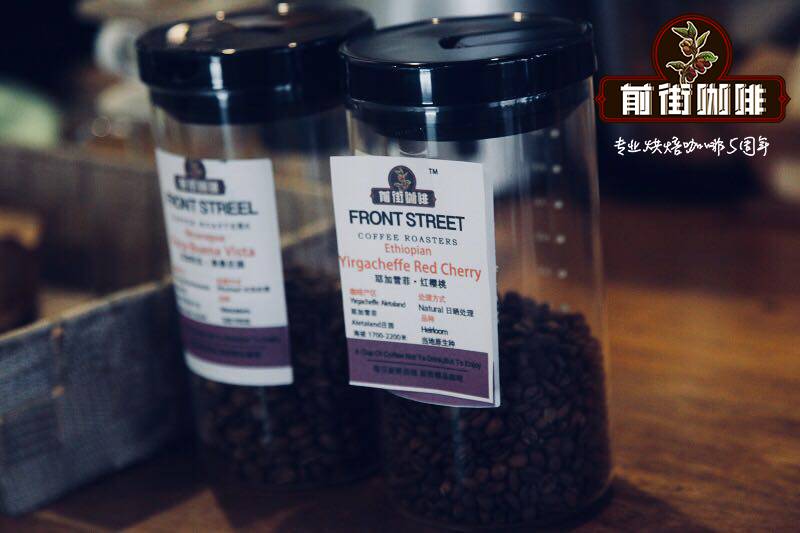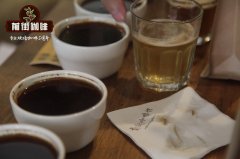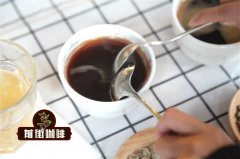Is Hawaiian Kona coffee good? why is it so expensive? how to brew Hawaiian Kona coffee beans?

Professional coffee knowledge exchange more coffee bean information please follow the coffee workshop (Wechat official account cafe_style)
Hawaii KONA
Kona, Hawaii
| 01 | production area profile |
Hawaii (Hawaii) after nearly two centuries of efforts to grow coffee, the term Kona is almost synonymous with "quality". But historically, it has been a rugged way to grow coffee since it was first introduced to the island in 1825. Even today, factors beyond human control tend to have an impact on the harvest in a coffee-growing area as successful as Hawaii.
The western and southern Kona region of Hawaii is famous for being rich in Kona coffee, which is located between 800 and 1100 meters above sea level, which is the most suitable environment for coffee trees. As a result, the slopes of Horala and Mauna are covered with coffee trees.
Queen Farm, Queen's Farm
Kona Coffee has always been grown at home. The harvest season of Kona coffee is from late August to January of the following year, when farmers pick the ripe fruit in batches and get coffee beans after processing.
This Kona comes from Queen Farm, Queen's Farm. In 2009, he won the runner-up title in the 2011 Geberia (Hawaii KONA Review) Cup Grand Prix. 70% of the harvest there is the top premium boutique beans, and it is a farm known for its high quality. Even, the boutique beans which are slightly worse than it also have the fragrance of super-grade boutique beans. People in the baking industry are amazed and full of praise!
The unique natural environment of Kona region has given birth to Arabica coffee, which has become the highest yield of coffee plantation in the world. Not only the quality is guaranteed, but also the coffee cultivated under the unique growth environment and climate is more fragrant. The coffee beans planted in Kona area are very good-looking, full in shape and bright in color, and are known as "the most beautiful coffee beans in the world".
Most of the coffee trees in the Kona area grow on volcanoes and can absorb a lot of nutrients in the soil, coupled with artificial cultivation technology, so that every coffee bean here has a different appearance. The Kona coffee made from the grinding of this kind of coffee beans is silky, full-bodied, slightly nutty and moderately acidity, as moving and meaningful as the colorful scenery of the island of Hawaii.
At present, the common Hawaiian coffee on the market, in addition to the kona district of the Big Island, including Maui, Cafu Island, and lovely Island, all have coffee estates on display. The common Hawaiian coffee includes different varieties such as Typica, Mocca and Catuai.
02 | processing method
Washing method
Kona coffee uses water washing and natural drying. Hawaii's clean and sweet mountain spring water provides the ideal conditions for washing, which creates the bright appearance and pure and fresh taste of Kona coffee beans. The washed coffee beans are placed on a huge plate and dried naturally by the sun.
03 | Analysis of raw beans
Uniform size, less fragrant defective beans, beans partial to olive green, moisture content of 11-13%, grass flavor and pungent spicy aroma. The centerline of raw beans is light brown.
Kona coffee beans are actually subdivided into five levels, and the first three levels are more common, followed by Extrafancy, Fancy, No.1, Primary and Peaberry (round beans, commonly known as male beans, because some coffee lovers love, especially pick out higher prices, about 5% of Kona coffee beans are Peaberry type.) Except for the special selection of Peaberry, the other four grades are graded according to the size, weight and defect ratio of beans.
Kona raw beans are labelled in sacks before they are exported, indicating that they have been certified by the Hawaiian Department of Agriculture with an identified official seal, so they are more expensive. Kona Kona coffee is second only to Blue Mountain Coffee. Kona coffee from sowing, picking to receive washing treatment, sun and polishing, all rely on manual labor, so the limited production and manual treatment in the United States, it appears to be high-quality and expensive. At present, Hawaiian 100%Kona Coffee and Blue Mountain Coffee are synonymous with premium coffee.
04 | Baking analysis
Kona and Blue Mountain Coffee are both low-density, low-density beans, the bean temperature should not be too high, in the sweet taste, the color changes to light yellow, high moisture content, need to stew enough time. Coffee beans are refreshing and clean and have a strong and heavy touch. Kona should not roast too deeply. Medium and shallow roasting (City--Full City-) is recommended.
Qianjie coffee is recommended to record the data before roasting, the water content, density, origin, treatment method, ambient temperature and humidity in the baking room, etc., and plan your baking curve. Recording the chemical and physical changes during the baking process will help you better understand the final baking results and help improve the baking curve.
Roaster: Yangjia 800N, input 550g raw beans
Bake the curve:
Put the furnace temperature to 200 degrees Celsius, adjust the firepower to 150 degrees after opening the throttle for 1 minute, keep the throttle unchanged, bake to 5 degrees 35 ", the temperature is 150 degrees, the bean surface turns yellow, the smell of grass completely disappears, the dehydration is completed, the firepower is adjusted to 140 degrees, and the throttle is changed to 4.
In the 9th '30th minute, ugly wrinkles and black markings appear on the bean surface, and the smell of toast obviously changes to the smell of coffee, which can be defined as a prelude to an explosion. At this time, listen carefully to the sound of the explosion point, start the explosion at 9: 30 ", lower the firepower to 70 degrees, the throttle should be fully open (adjust the firepower to be very careful, not so small as to be free of bursting sound), turn off the heat at 182 degrees, and put the pot at 193.4 degrees.
The medium-baked Kona mainly gets a balanced, warm, sweet nectar and elegant, full-bodied taste. Brewing coffee gives off a sweet mulberry aroma that makes people feel sweet and happy. Yuyun, a kind of soft malt, slips into the throat and exhales and then gushes on the throat, which cools down like a cup of mulberry tea.
04 | Cooking analysis
1. Filter cup: V60
two。 Water temperature: 92 degrees
3. Degree of grinding: small Fuji 3.5
4. Baking degree: medium baking
5. Steaming time: 30 seconds
Flavor: malt, mulberry fruit, long-lasting caramel sweetness
Qianjie coffee suggestion technique: slow and stable continuous water injection: thin water flowing around, gently injecting water to let it extract evenly, very slowly, can also be stirred properly with a stirring rod, usually in the steaming stage, a cross stirring is carried out to make the water fully come into contact with coffee powder and increase the release of aromatic substances.
Related recommendation: Hawaiian kona Kona Coffee introduces how to brew Hawaiian Kona Coffee
Important Notice :
前街咖啡 FrontStreet Coffee has moved to new addredd:
FrontStreet Coffee Address: 315,Donghua East Road,GuangZhou
Tel:020 38364473
- Prev

Hawaiian Coffee Where is Hawaii Coffee Made What is Hawaii Kona Coffee Grade How is it Graded
Professional coffee knowledge exchange More coffee bean information Please pay attention to coffee workshop (Weixin Official Accounts cafe_style) Hawaii Hawaii After nearly two centuries of efforts to grow coffee, the term Kona has almost been equivalent to "quality." Hawaii has geographically advantageous growing conditions, but historically coffee trees have been cultivated since 1825.
- Next

Characteristics of Hawaiian coffee boutique coffee beans grading and brewing flavor in Kona, Hawaii
Professional coffee knowledge exchange more coffee bean information please follow the coffee workshop (Wechat official account cafe_style) Hawaii KONA: there is a saying that Blue Mountain is the king of coffee, KONA is after coffee. But relative to the Blue Mountains, Hawaiian coffee has a very special taste, not too strong, not too sour and mellow, due to the island topography and volcanic soil.
Related
- Detailed explanation of Jadeite planting Land in Panamanian Jadeite Manor introduction to the grading system of Jadeite competitive bidding, Red bid, Green bid and Rose Summer
- Story of Coffee planting in Brenka region of Costa Rica Stonehenge Manor anaerobic heavy honey treatment of flavor mouth
- What's on the barrel of Blue Mountain Coffee beans?
- Can American coffee also pull flowers? How to use hot American style to pull out a good-looking pattern?
- Can you make a cold extract with coffee beans? What is the right proportion for cold-extracted coffee formula?
- Indonesian PWN Gold Mandrine Coffee Origin Features Flavor How to Chong? Mandolin coffee is American.
- A brief introduction to the flavor characteristics of Brazilian yellow bourbon coffee beans
- What is the effect of different water quality on the flavor of cold-extracted coffee? What kind of water is best for brewing coffee?
- Why do you think of Rose Summer whenever you mention Panamanian coffee?
- Introduction to the characteristics of authentic blue mountain coffee bean producing areas? What is the CIB Coffee Authority in Jamaica?

